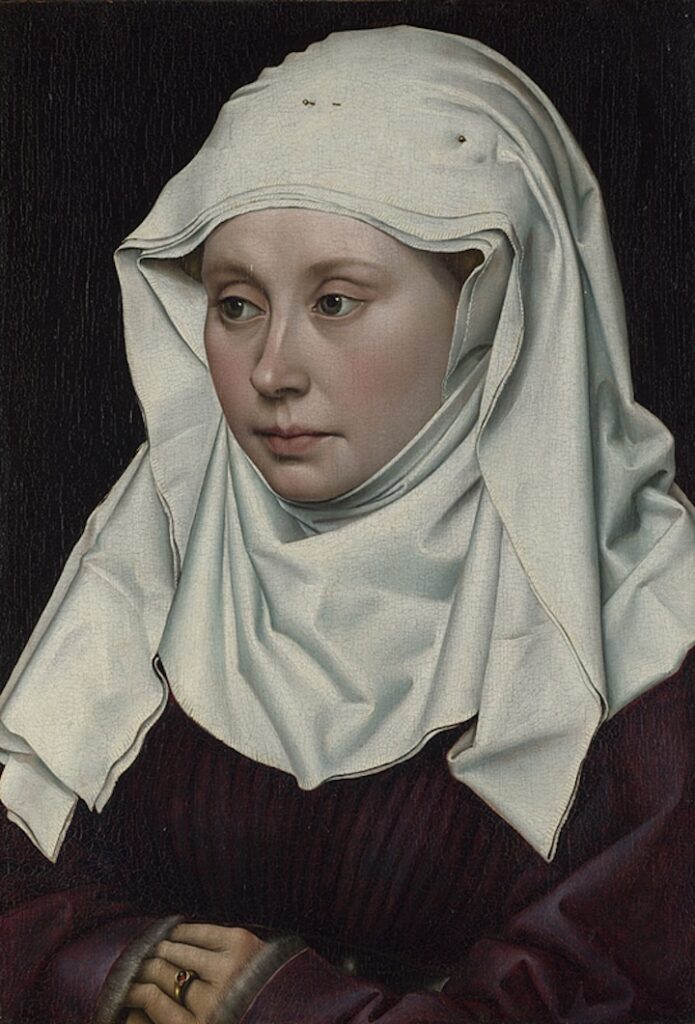May 13, 1373 was an important day in the life of Lady Julian of Norwich. She recovered from a life-threatening illness, during which she claimed to have had sixteen visions from Our Lord. She recorded them in a text today known as Revelations of Divine Love. Many call it the first surviving English text by a woman.
2023 marks the 650th anniversary of those events.
I’ll confess a certain ambivalence about Julian, especially in how she expressed herself about sin. Her signature line – “All will be well” – can be read (misread?) as a kind of universalism. Julian can be read in a more orthodox manner, but I leave that question aside here.
The little church in Norwich, England in which the anchoress lived is now Anglican. Today’s interest in Julian is sometimes driven by a desire to pursue a feminist agenda in the Catholic Church and/or advance it in Anglicanism. But there are greater matters in play.
For instance, one of Julian’s visions – her “showings.” It’s highlighted in that Norwich church on a small table with a hazelnut on it.
And in this He [Christ] showed me a little thing, the quantity of a hazel nut, lying in the palm of my hand, as it seemed. And it was as round as any ball. I looked upon it with the eye of my understanding, and thought, “What may this be?” And it was answered generally thus, “It is all that is made.” I marveled how it might last, for I thought it might suddenly have fallen to nothing for littleness. And I was answered in my understanding: It lasts and ever shall, for God loves it. And so have all things their beginning by the love of God. In this little thing I saw three properties. The first is that God made it. The second that God loves it. And the third, that God keeps it.
The tiny hazel nut is all creation, “all things visible and invisible” as the Creed puts it. For us, so often seduced by the world, the flesh, and the devil, the fact that all of creation in all its splendors can be contained in a single hazel nut puts things in perspective, a Divine perspective.
Julian’s commentary on the “three properties” of creation likewise deserves our attention. “God made it.” Creation is not a chance or an accident, the fortuitous emergence of Shakespeare from a typewriter pounded by monkeys. It is a plan, a plan of Wisdom. Creation is, as Joseph Ratzinger puts it, a “divine project.”
Nor is God some cold intellect, a supernatural Spock “ordering” things. What God does, He does out of love because He Is Love. The revelation Julian claims to have received affirms that: what exists does so because “God loves it.” God is not indifferent to His Divine Project. His Divine plan is in fact intended to advance our salvation and the universe with us, because salvation is nothing more (or less) than God drawing back, in freedom, what He loves to Himself, i.e., to a communion of persons.
Finally, “God keeps it.” People today tend to overlook providence as an essential dimension of the theology of Creation. Although modernity babbles a lot about “sustainability,” it frequently overlooks the fact that, without God’s sustainment, the splendiferous hazel nut of Creation would all revert to nothingness.
Julian was writing centuries before Anglo-American thought would be infected by Deism, which short-circuits a proper understanding of Providence because it turns God into a divine watchmaker, the absentee landlord deity of Creation.
That’s not the God (or Creation) Julian experienced. Many Catholics today have a divided mentality – “God created” on one side, “how God created” as a science problem on the other. And never the twain shall meet. Deism along with a mechanistic universe and Darwinian biology help reinforce the division. Vatican II’s comments about “the autonomy of created things” (Gaudium et spes 36) further muddies the waters because, contrary to the Council’s injunction, we have not “deciphered” the “laws and values” behind that autonomy, much less by using the faith-and-reason combination the Council prescribes.
In The Divine Project, Joseph Ratzinger calls on Catholics to pursue that path, re-expressing faith in Creation for a world vastly different from Julian’s. But Julian’s “properties” of Creation – all that is comes from the loving hand and will of God, who sustains it – remain as true and urgent today as they did 650 years ago.
If we also take seriously the idea that creation is part of the “divine project” of salvation, i.e., bringing creation into relationship with its Creator, then we likewise need to reinvigorate our understanding of salvation. Margaret Turek’s book Atonement is valuable in this respect, because if we take God’s love for His creation seriously, then His “anger” at sin and the need for atonement are not the demands of an over-sensitive, “offended” God, but necessary implications of a God who loves His creation so much that He cannot acquiesce in its deformation, even if that creation willingly chooses self-defacement.
True “autonomy of Creation” requires Creation to be fulfilled as it was meant to be, not what it de facto became by sin, i.e., “choice” untethered from truth and goodness.
In 2008, Marian Zawada published a two-volume work, Antologia mistyki polskiej (“An Anthology of Polish Mystics”). His principle of division was the dreaded “gender binary” – men in one volume, women in the other. It’s striking that male mystics in general tended to speak in the theological and syllogistic, females with passion and emotion.
That difference is evident in Julian’s “properties” of Creation, which could become a theological treatise. But she viewed them from the perspective of love, of God’s passion for His creation. We need to recover that passion truly to value God’s “divine project.”
__________
















